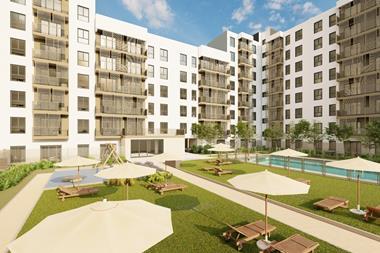Green bonds are attracting new types of capital to the property sector, with growth in the market set to be beneficial to developers, the chief executive of Global Real Estate Sustainability Benchmark (GRESB) has argued.
Nils Kok noted that many governments perceived property as “the source of all evil” but said the real estate industry could be part of the solution in bringing down global emission levels.
He identified the growth of technology such as smart thermostats as one way buildings could reduce their energy consumption.
But, speaking at today’s IP Real Estate Global Conference in Copenhagen, he warned that the industry was being too slow to adapt to the changing world.
Kok, also a co-founder of GRESB, said the “significant over-subscription” to recent issuances of green bonds pointed towards a new way for developers to attract capital to the market.
“When you get more demand, you get more favourable pricing and shave off a couple of basis points,” he said, insisting the growing market would allow access to “an interesting new pool of capital”.
“In the current environment, liquidity is really not the issue,” he said.
“But three to five years from now, we might actually need that liquidity and appreciate liquidity that comes from investors in real estate that would normally not invest in real estate, but now invest because it has the ‘green’ label.”
Speaking later in the day, Sony Kapoor, managing director of think tank Re-Define, warned the property sector that new pressures would be coming their way in the wake of the United Nations Climate Change Conference in Paris later this year.
“I can assure you there are serious discussions happening,” he said.
“I can assure you Paris will deliver some tangible outcomes – and I can assure you they will not be enough.”
Kapoor added that there would be significant pressure for the property sector to do its part in tackling climate change, with around 40% of European Union emissions attributable to the property sector.
“This is going to be a big driving constraint in terms of, not just greenfield investments, but also retrofitting and brownfield,” he said.
“Of course, it poses significant threats but brings with it just about an equal number of opportunities.”








